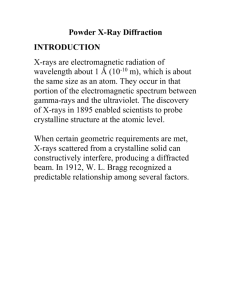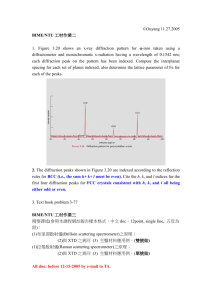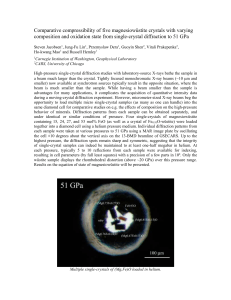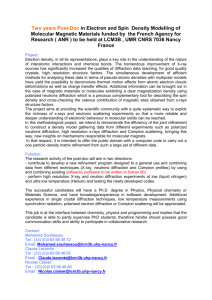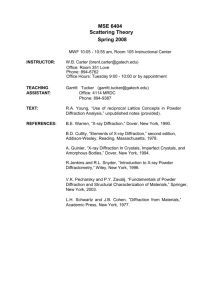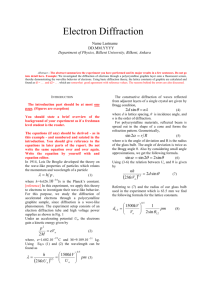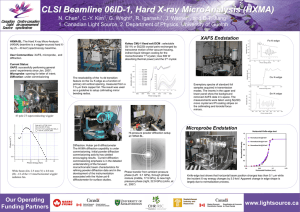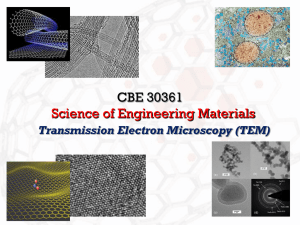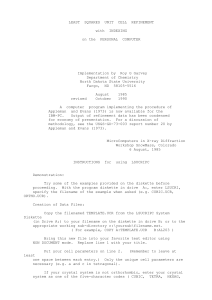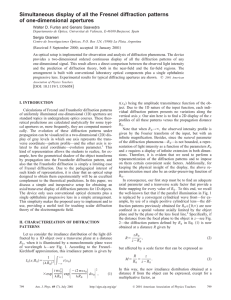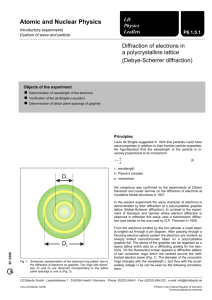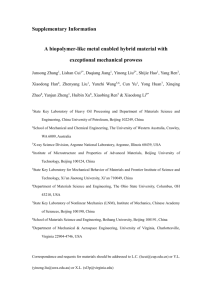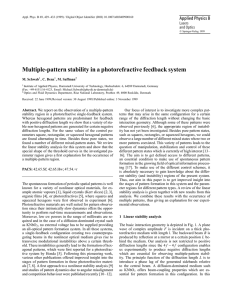Supplementary information
advertisement
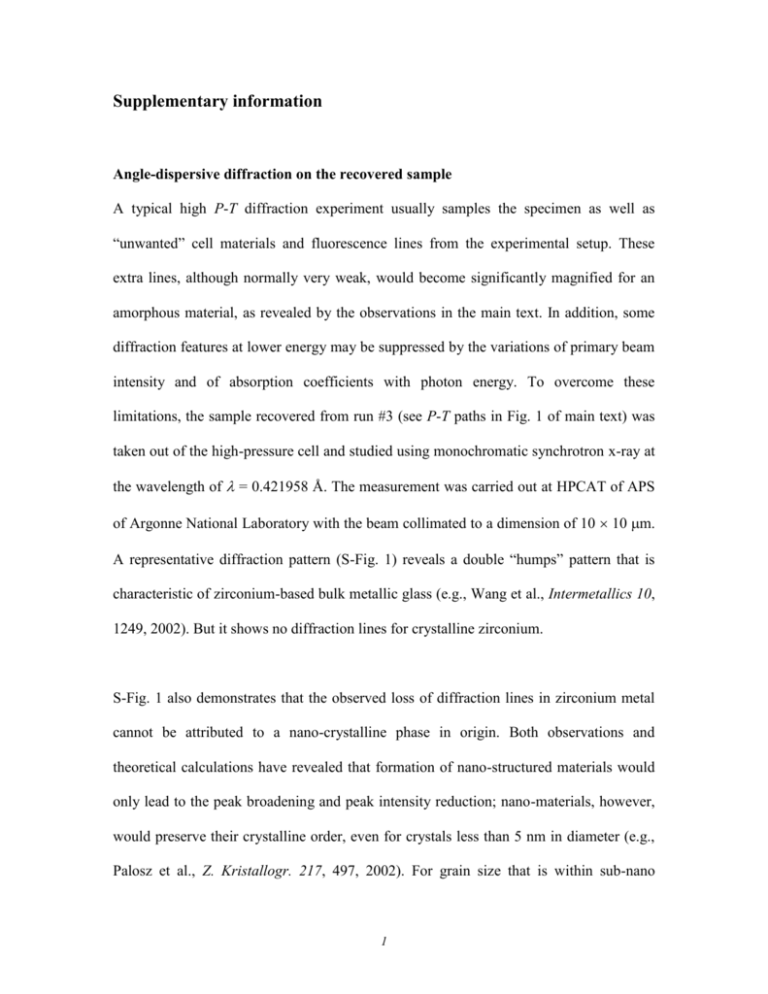
Supplementary information Angle-dispersive diffraction on the recovered sample A typical high P-T diffraction experiment usually samples the specimen as well as “unwanted” cell materials and fluorescence lines from the experimental setup. These extra lines, although normally very weak, would become significantly magnified for an amorphous material, as revealed by the observations in the main text. In addition, some diffraction features at lower energy may be suppressed by the variations of primary beam intensity and of absorption coefficients with photon energy. To overcome these limitations, the sample recovered from run #3 (see P-T paths in Fig. 1 of main text) was taken out of the high-pressure cell and studied using monochromatic synchrotron x-ray at the wavelength of = 0.421958 Å. The measurement was carried out at HPCAT of APS of Argonne National Laboratory with the beam collimated to a dimension of 10 10 m. A representative diffraction pattern (S-Fig. 1) reveals a double “humps” pattern that is characteristic of zirconium-based bulk metallic glass (e.g., Wang et al., Intermetallics 10, 1249, 2002). But it shows no diffraction lines for crystalline zirconium. S-Fig. 1 also demonstrates that the observed loss of diffraction lines in zirconium metal cannot be attributed to a nano-crystalline phase in origin. Both observations and theoretical calculations have revealed that formation of nano-structured materials would only lead to the peak broadening and peak intensity reduction; nano-materials, however, would preserve their crystalline order, even for crystals less than 5 nm in diameter (e.g., Palosz et al., Z. Kristallogr. 217, 497, 2002). For grain size that is within sub-nano 1 regime, crystalline materials would be broken down to their unit-cell scaled domains/fragments. Under such circumstances the lattice can no longer be well defined and may be better viewed as materials with no crystalline order. Figure caption S-Fig. 1 An x-ray scattering image recorded in a CCD detector (Fig. 1a) and the integrated diffraction pattern (Fig. 1b) for the recovered zirconium specimen. 2

